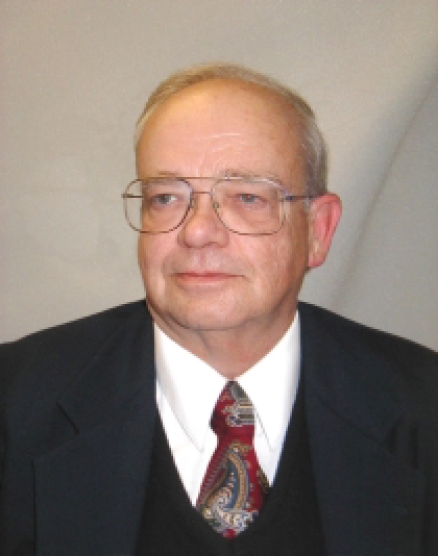by Larry Anderson and Janet Lathrop
Thomas S. Tenforde, senior chief scientist in the environmental technology division, Pacific Northwest National Laboratory, Richland, Wash., will receive the eighth d’Arsonval Award, presented by the Bioelectromagnetics Society to recognize “extraordinary accomplishment within the discipline of bioelectromagnetics.” This award recognizes Tenforde’s extensive research on dosimetry and biophysical interaction of static and low-frequency electric and magnetic fields with living systems.
Tenforde was president of the Bioelectromagnetics Society in 1987-1988. The d’Arsonval Award will be presented to Tenforde by current BEMS President Frank Barnes on Monday, June 11 during an awards luncheon from 12:15 to 1:45 in the Minnesota East Ballroom at the St. Paul Radisson Riverfront Hotel. Tenforde’s talk for the occasion is titled “The Wonders of Magnetism.”
Educated at Harvard University and the University of California at Berkeley, Tenforde’s strong interest in bioelectromagnetics began with the use of static electric fields for single-cell micro-electrophoresis during his doctoral thesis work. In the 1970s and 1980s at Lawrence Berkeley National Laboratory he conducted a broad range of biological studies on static and ELF magnetic fields. Tom and his colleagues at the Donner Laboratory at the University of California developed what soon became the foremost program investigating the biological effects of strong static magnetic fields. These studies looked at the cardiovascular system, the nervous system, thermoregulation, circadian rhythmicity, lipid bilayer membrane permeability, and animal behavior.
This work initially began because of concerns about human exposure to strong magnetic fields near thermonuclear fusion reactors, magneto-hydrodynamic power systems, and high-energy physics facilities such as cyclotrons and bubble chambers. Tom and his colleagues played a key role in the evaluation of potential risks to patients and workers from MRI facilities. They helped to demonstrate the safety of magnetic resonance imaging (MRI) systems, and aided the establishment of occupational and public exposure guidelines for exposure to static magnetic fields by the American Conference of Governmental Industrial Hygienists and the International Commission on Nonionizing Radiation Protection.
In the early 1980s, Tom led research in the development of a small computerized exposure meter for recording static magnetic fields that could be worn during a normal work day. Subsequently this meter was modified for EPRI to measure small ELF magnetic fields. It was the first of what has become a series of smaller and more capable meters developed for electromagnetic field exposure measurements. In our age of microminiature electronics and computers this has become routine, but in the early 1980s it was truly a formidable undertaking.
 In 1987, Tom became a senior chief scientist in the health division at the Pacific Northwest National Lab. He has been at the center in the development of NMR spectrometer systems, including the world’s highest frequency (900 MHz) analytical NMR spectrometer for the study of large macromolecular structures. This is important because many biological molecules of interest are too large to be satisfactorily studied in aqueous solution with existing NMR systems operating at lower frequencies.
In 1987, Tom became a senior chief scientist in the health division at the Pacific Northwest National Lab. He has been at the center in the development of NMR spectrometer systems, including the world’s highest frequency (900 MHz) analytical NMR spectrometer for the study of large macromolecular structures. This is important because many biological molecules of interest are too large to be satisfactorily studied in aqueous solution with existing NMR systems operating at lower frequencies.
As manager of PNNL’s Hanford Radioisotopes Program, Tenforde supervised work which produced the medical isotope yttrium-90, which is now being used worldwide to treat cancer and recently won an award as one of the 23 most important new technologies developed with financial support from DOE. By 1999, yttrium-90 production and sales were privatized and the accomplishment won a Federal Laboratory Consortium Award.
Tenforde is well known among his peers, having served on more than 30 national and international committees and boards, contributed to as a reviewer to scores of agency reviews and journals, and for his national and international standards-related work on public and occupational exposure to ionizing and nonionizing radiation. He is a member of the American Association for the Advancement of Science, the New York Academy of Sciences, the American Conference of Governmental Industrial Hygienists, the Radiation Research Society and the Society of Nuclear Medicine.
Tom has benefited greatly throughout his career from the encouragement of his wife, Susan, and his sons Adam and Mark.
